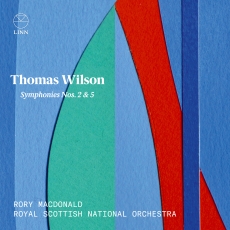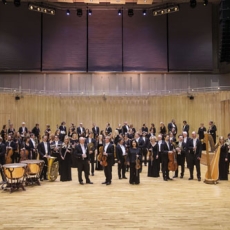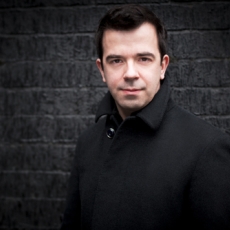Rory Macdonald & RSNO - Thomas Wilson: Symphonies Nos. 2 & 5 - Fanfare [PS]
In Fanfare 43:1 I reviewed Rory Macdonald’s recording of the Symphonies Nos. 3 and 4 by the Scottish composer Thomas Wilson (1927–2001), also with the Royal Scottish National Orchestra. The new disc of Wilson’s Second and Fifth Symphonies now completes Macdonald’s survey. (The composer suppressed his Symphony No. 1.) The Second, dating from 1965, is a tougher work than those on the first disc. It contains several explosive rhythmic passages, particularly in the outer movements, and harmonically it is atonal without being glaringly dissonant (insofar as no tonal center anchors the harmony). The work is of its era in that way, but certain fingerprints of the composer are already embedded in the writing. The most notable of these is his propensity to pare back the texture for extended periods to a Stravinskian lucidity involving a few solo instruments. The effect suggests viewing a tapestry, then moving in to examine portions of it with a magnifying glass. (This occurs in the Fifth Symphony as well.) That Wilson manages it without impeding the music’s sense of flow speaks to his skill, and also his clarity of thought. Paul Conway’s excellent booklet note refers to Wilson’s “fastidious approach to his craft,” and describes his music as “fresh, questing and visionary” (which puts it perfectly). Wilson himself aimed in his symphonies for a “broad, unhurried sweep,” in spite of which he was capable of writing vivid fast music. His orchestral colors provide another individual factor. Wilson’s use of percussion and the orchestral piano (often making its presence felt in the bass register) is highly distinctive. Again, the term Stravinskian suggests itself: Wilson’s symphonies are less thickly scored than those by British symphonists such as Edmund Rubbra, Robert Simpson, or Havergal Brian. In the Fifth Symphony (1998), as you might expect, Wilson has refined his sound and clarified his writing further, without straying from the basic style he established 33 years earlier. The work is in one continuous movement with a genuinely symphonic momentum, displaying the same spikiness and fragmentary passages that are prevalent in its predecessors. Particularly impressive is the work’s hushed, uneasy epilogue, which ends quietly and poses questions rather than affirmative answers. Even at 71, Wilson had more to say. The performances, as with Symphonies 3 and 4, are exemplary, while Linn’s rich but ever so slightly dry sound is ideal for music of such textural lucidity. In the year since I reviewed the earlier disc I have revisited it many times (let’s face it, there was not much else to do during that year), and I continue to discover more fascinating detail and ambience in Wilson’s music. I have no doubt that will also be the case with this second disc. I strongly recommend both to anyone with even a passing interest in the late 20th-century symphonic repertoire.


